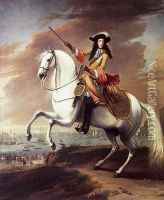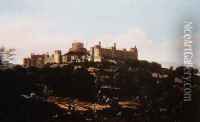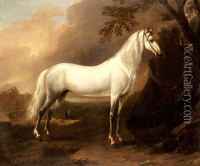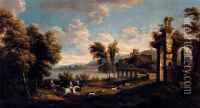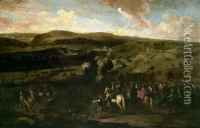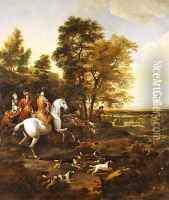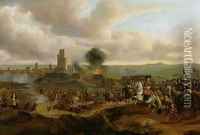Jan Wyck Paintings
Jan Wyck (also known as Jan Wiyck or Jan Wick) was a Dutch Baroque painter who was born in Haarlem, Netherlands in 1645. He is best known for his works depicting battles, military encounters, and equestrian scenes. Wyck was one of the early artists who contributed to the development of British painting, as he spent a significant part of his career in England.
Wyck's father, Thomas Wijck, was also an artist, known for his genre scenes and paintings of alchemists' workshops. Under his father's tutelage, Jan developed his painting skills and eventually moved to England around the 1660s. His arrival in England coincided with a growing demand for art that documented military campaigns and the victories of the English army, particularly during the reign of King William III.
In England, Wyck quickly established himself as a leading painter of military and equestrian subjects. His works were characterized by their dynamic composition, attention to detail, and ability to convey the movement and chaos of battle. He was also skilled in portraying the English countryside and often set his military scenes within expansive landscapes.
Wyck's reputation grew, and he became a sought-after artist among the British aristocracy. He created works for several notable patrons, including the Duke of Marlborough. His paintings of the Battle of the Boyne and the Siege of Namur were particularly celebrated for their accuracy and vibrancy.
Apart from military and equestrian paintings, Wyck also produced a number of hunting scenes, landscapes, and occasional portraits. His style showed the influence of Dutch Golden Age painting but adapted to suit the tastes of his English clientele.
Jan Wyck's contribution to British art was significant in that he helped to foster a taste for military and equestrian subjects that would be carried on by later artists. His influence can be seen in the works of artists such as James Seymour and John Wootton, who followed in his footsteps and continued the tradition of battle and equestrian painting in England.
Wyck continued to work and live in England until his death in 1700. His legacy includes a large body of work that provides a visual record of the military history of the period, as well as a testament to the cross-cultural exchange between Dutch and British art during the late 17th century.
